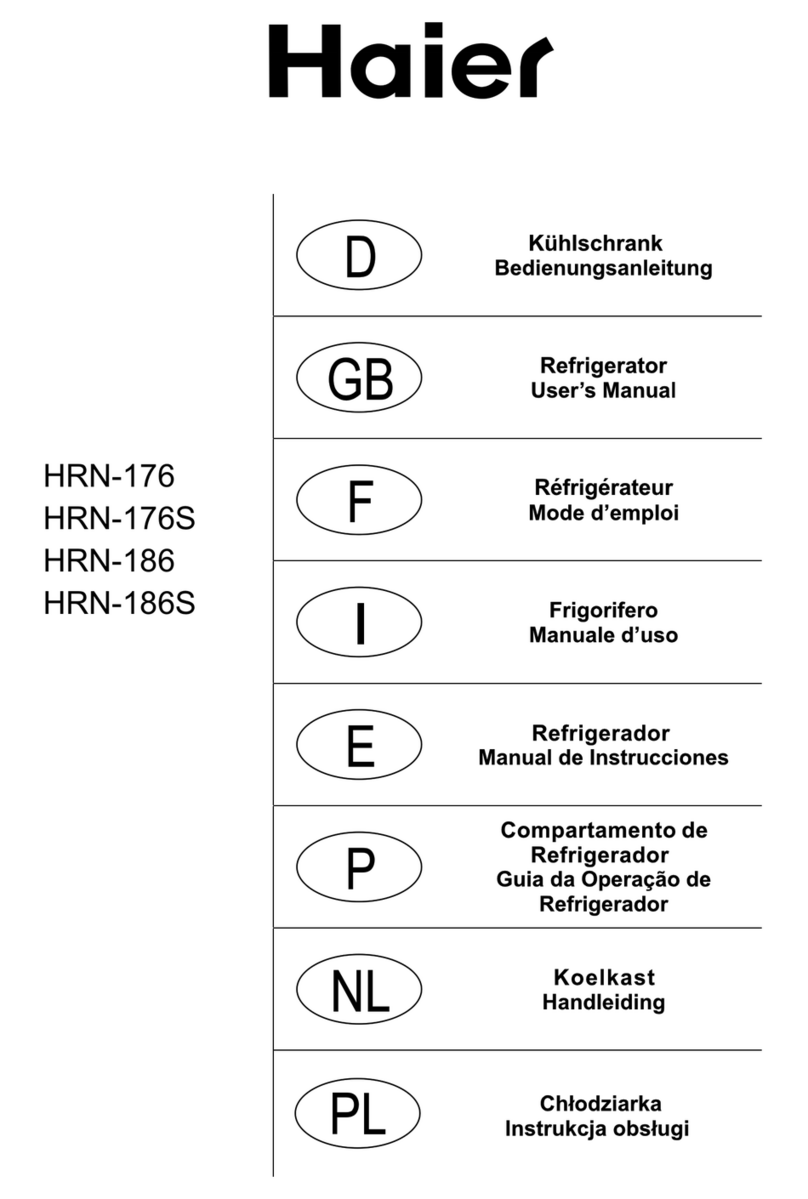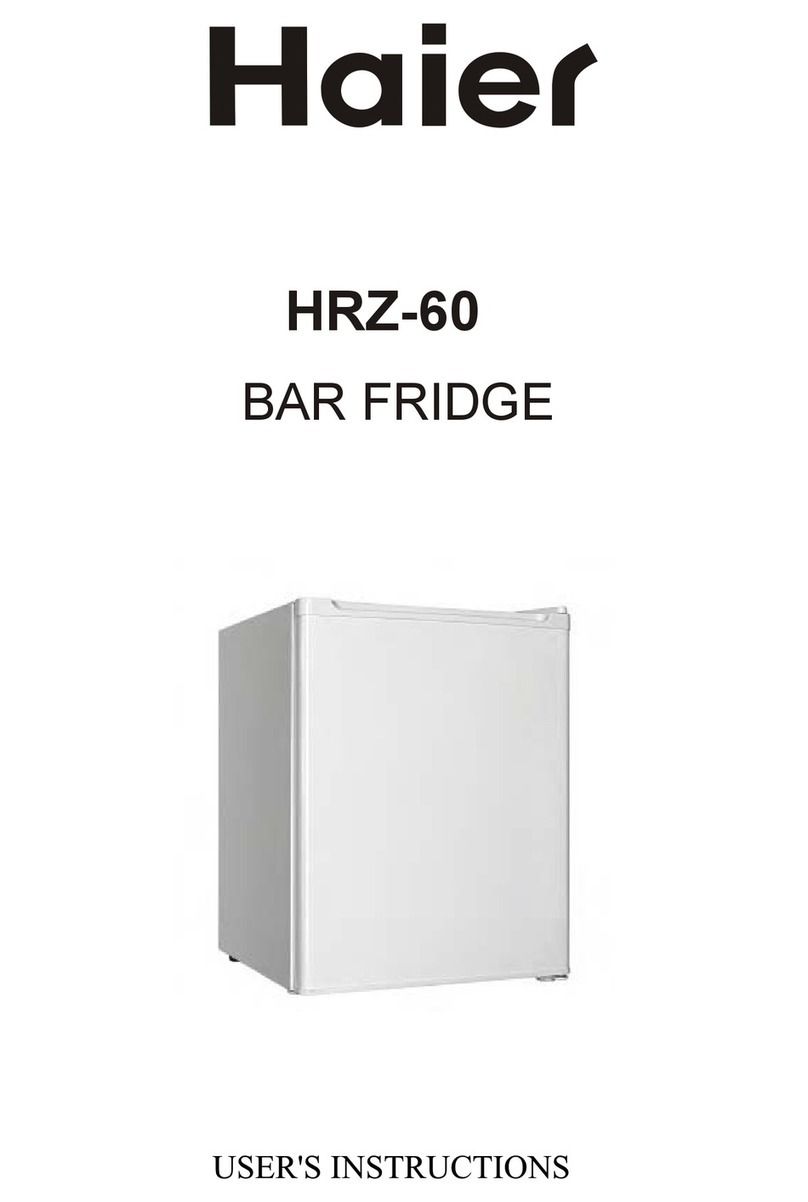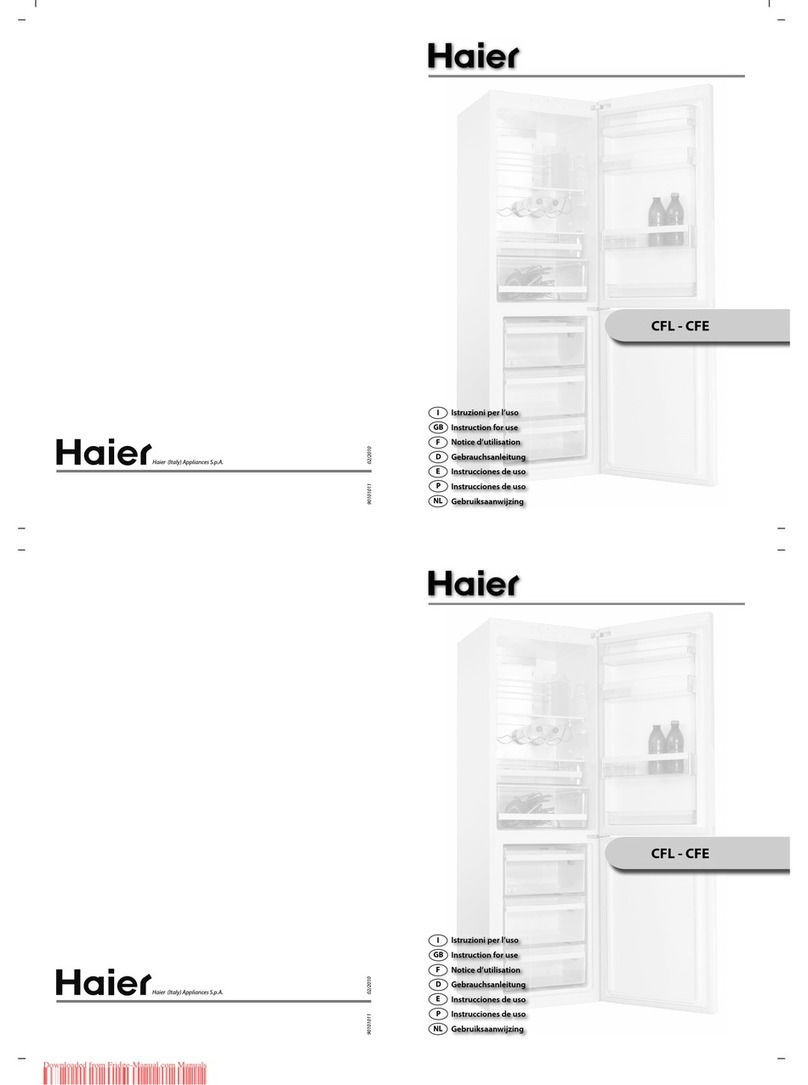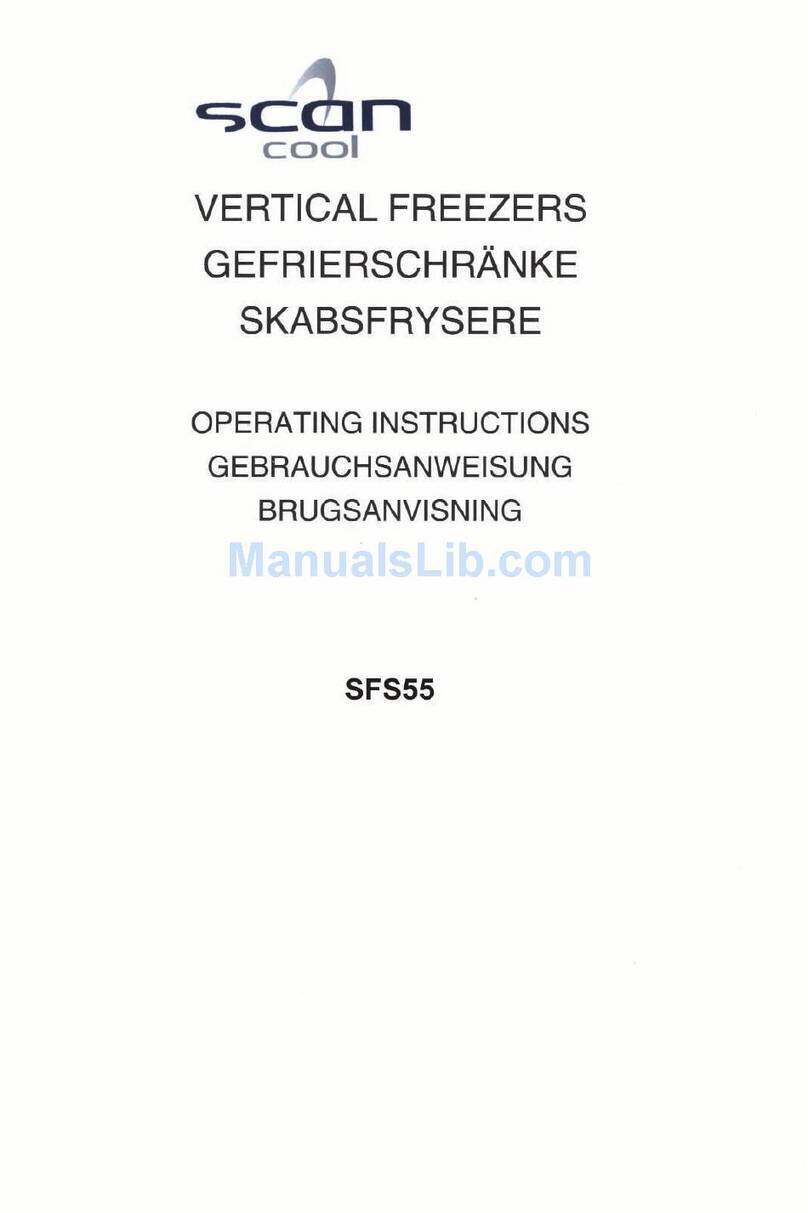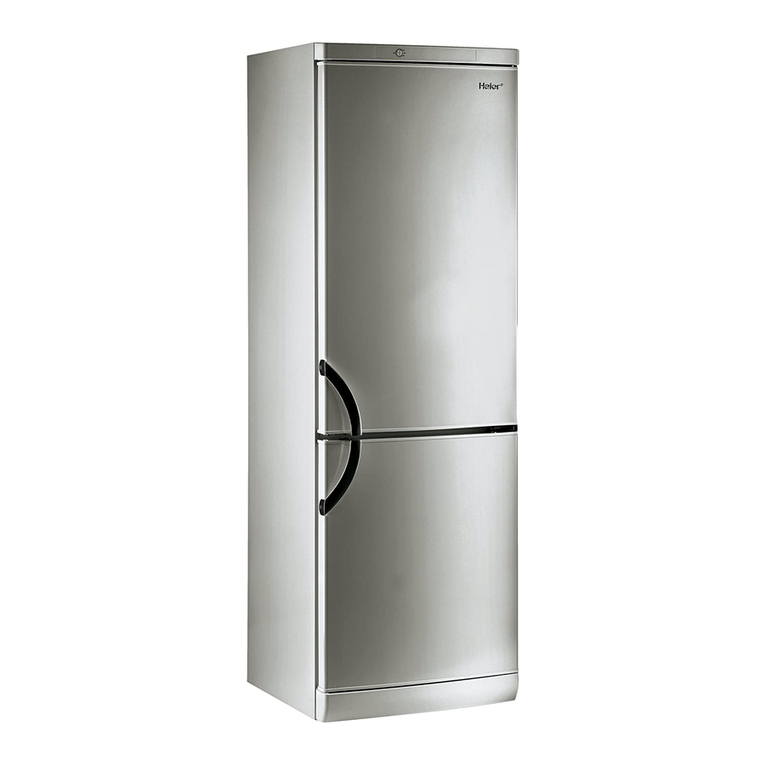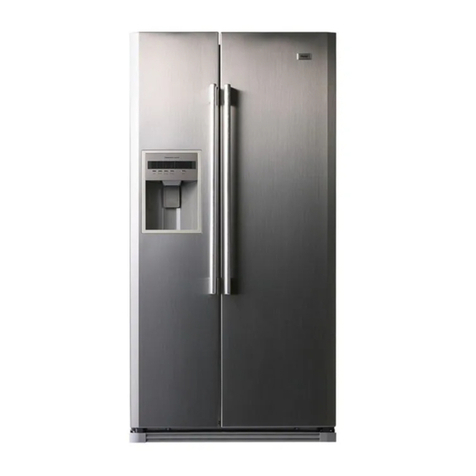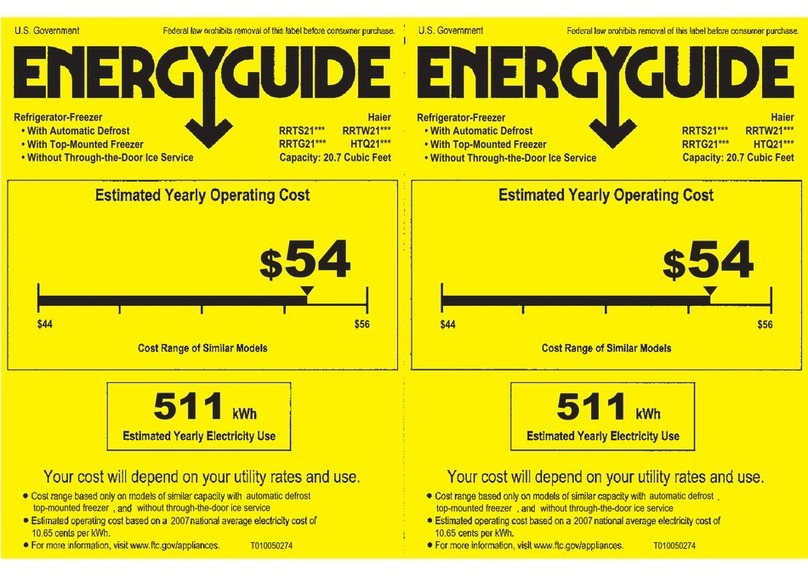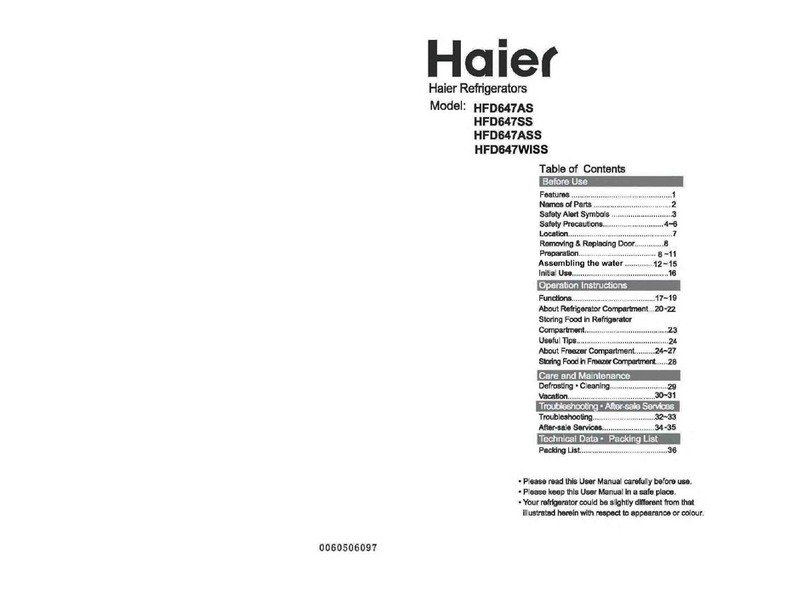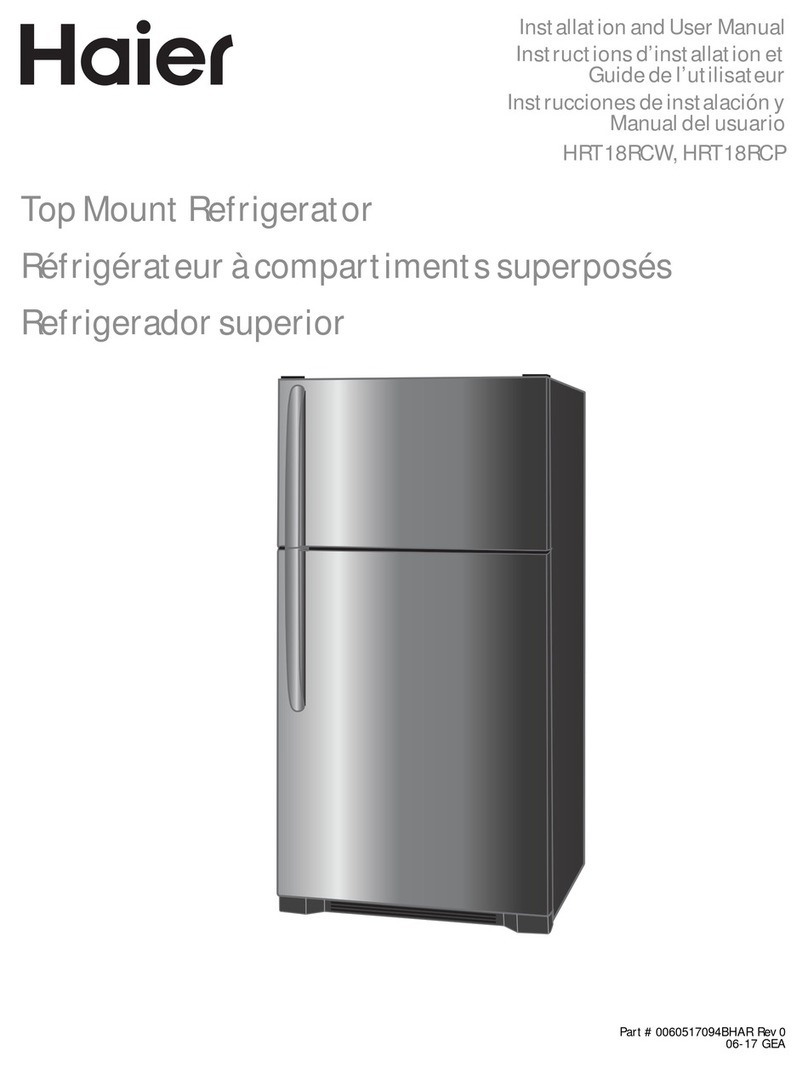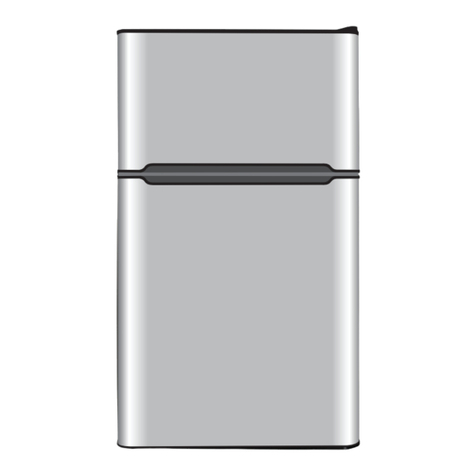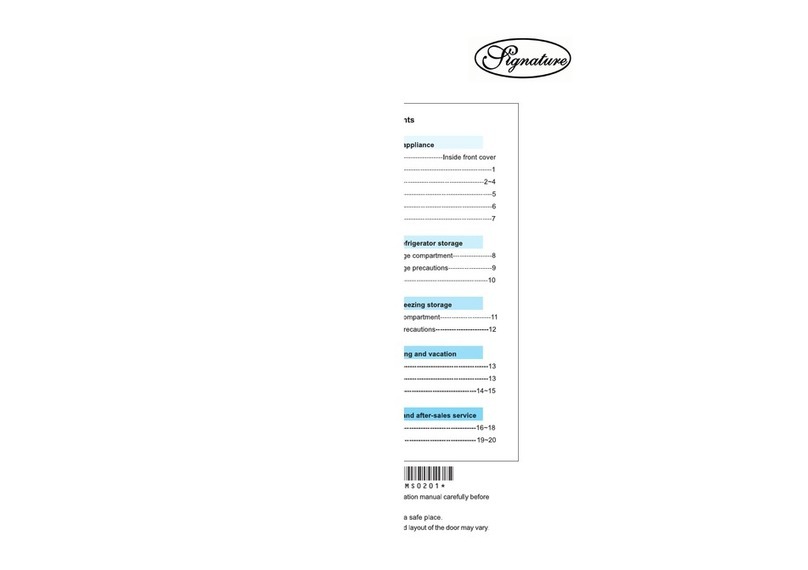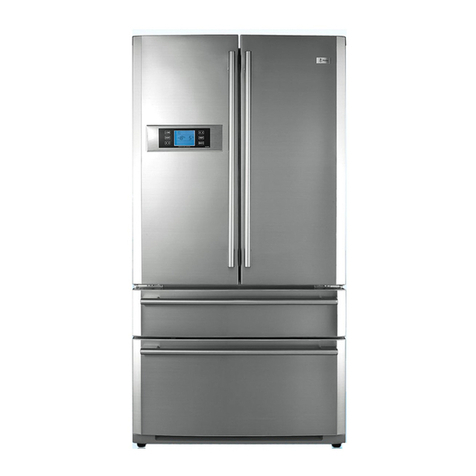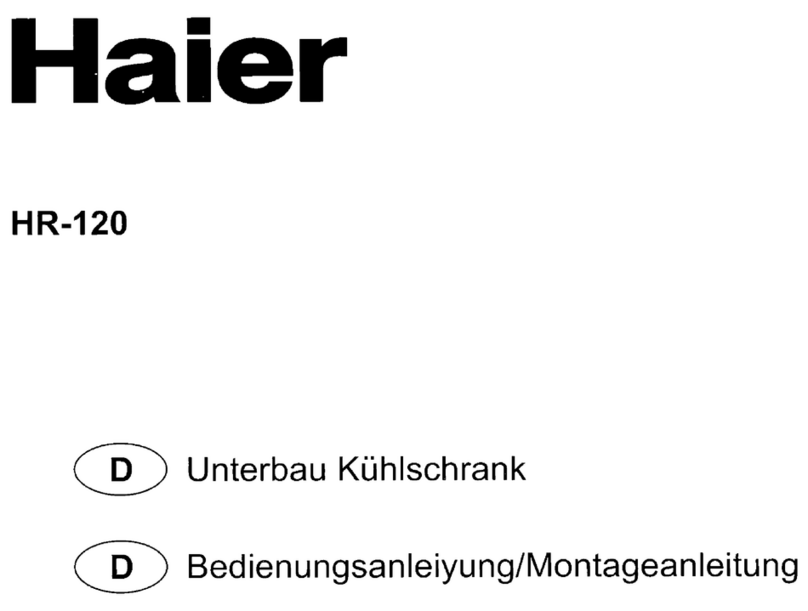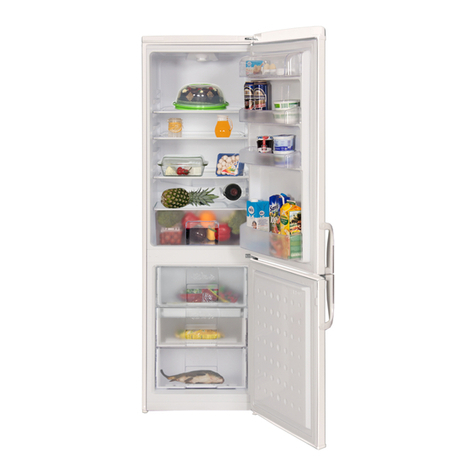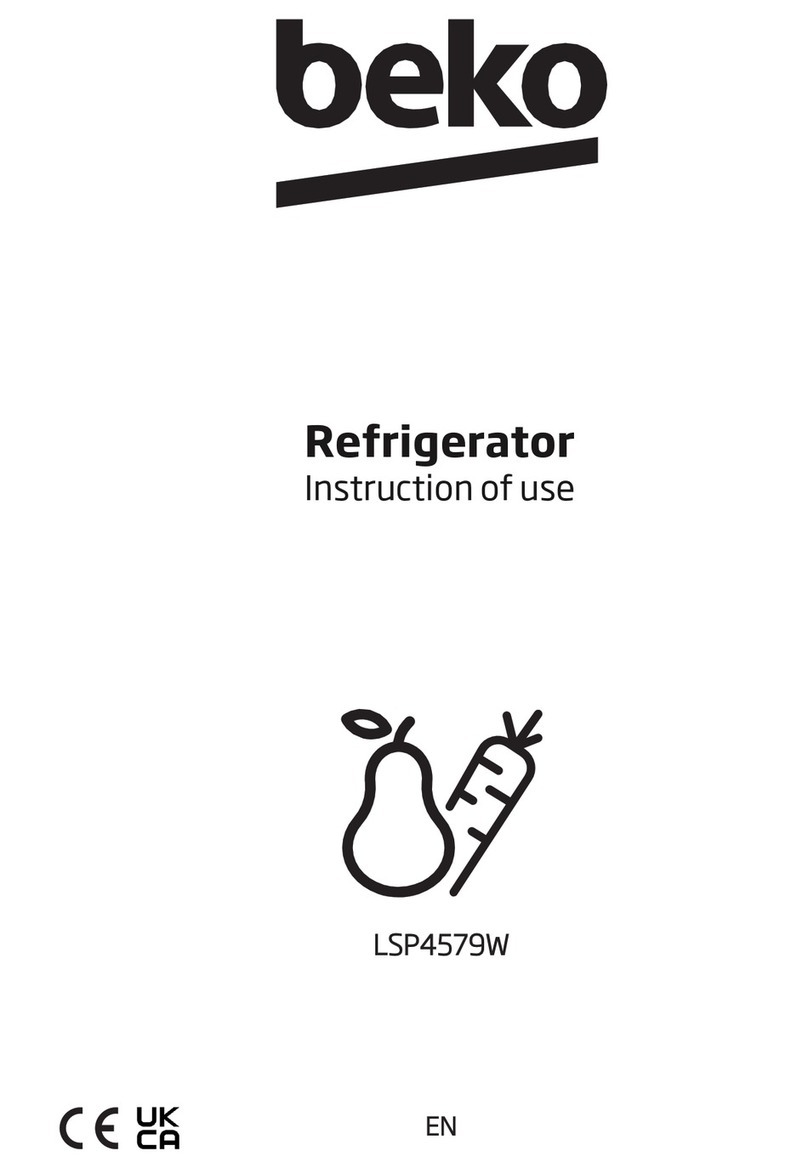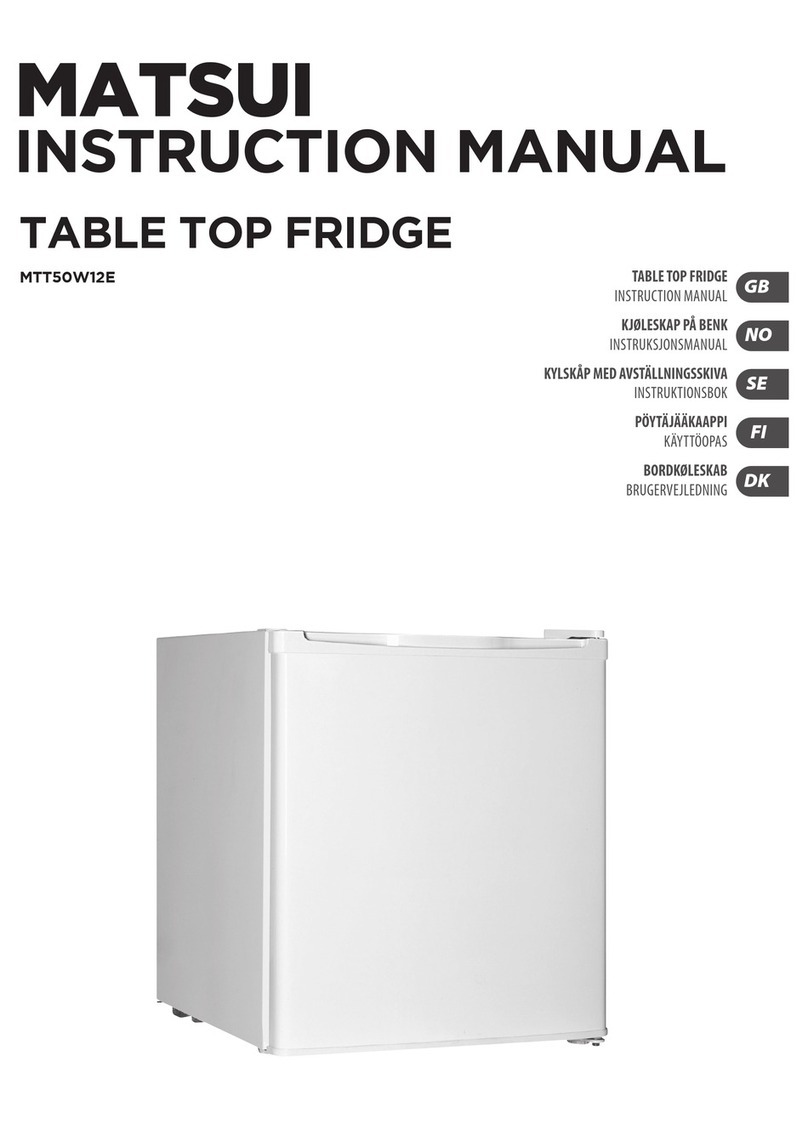-6-
lNever re-freeze a defrosted product.
lDo not store liquids in bottles or cans(besides high percentage spirits) especially
carbonated beverages in the freezer, as these will burst during freezing
lThe storage time for the respective food (especially for commercially frozen food)
recommended by the food manufactures should not be exceeded. Only take the
required amount of food out pf the freezer.
lDuring defrost or, maintenance and care the temperature of frozen food could
arise and the storage time could be shorter
How to Use the Refrigerator Compartment?
lEggs have to be put in the eggs’ pockets, bottles in the bottles’ pocket, etc.
lFruits and vegetables have to be put in the salad crisper.
lJars have to take place in the tubs of the door of the refrigerator.
lOther perishable food, or which can loosen stenches in the refrigerator, must be
separately packed.
Placement of Food
lPlease not accumulate too much food in the refrigerator because it would
engender a loss of cold.
lFood has to be wrapped separately in aluminum sheet or in cellophane sheet or in
airtight plastic boxes.
lHot food cannot be put in the refrigerator or in the freezer until they have reached
the ambient temperature, or it will increase electrical consumption.
lNever place vegetables and fruits into freezer compartment because they will be
unfit for the consumption once defrosted.
When the refrigerator working for a long time, the inner surface of the freezer will be
covered with a layer of hoarfrost. It may raise the electricity consumption and decrease
the effect of refrigeration. Then you should defrost your freezer once a month.
When defrosting, cut off the power, open the door and move frozen foods to a cool
place. Use a plastic spatula to remove the hoarfrost. Then remove the hoarfrost so
unstuck and wipe the inside of your freezer with a sweet and dry cloth.
Notes: Never use metal tools to defrost your freezer because it could damage it.
DEFROSTING
GENERAL INSTRUCTIONS FOR CARE AND MAINTENANCE
The refrigerator should be cleaned once a month. Before cleaning, the electric plug must
be removed from the power supply.
Wipe the inside and the outside of the refrigerator with a wet soft cloth.
If it's too dirty, clean with a soft cloth with neutral detergent and, then remove the
moisture with dry cloth.
If you leave the refrigerator idle for a long time, proceed as follows:
lDisconnect the refrigerator from the electric power supply.
